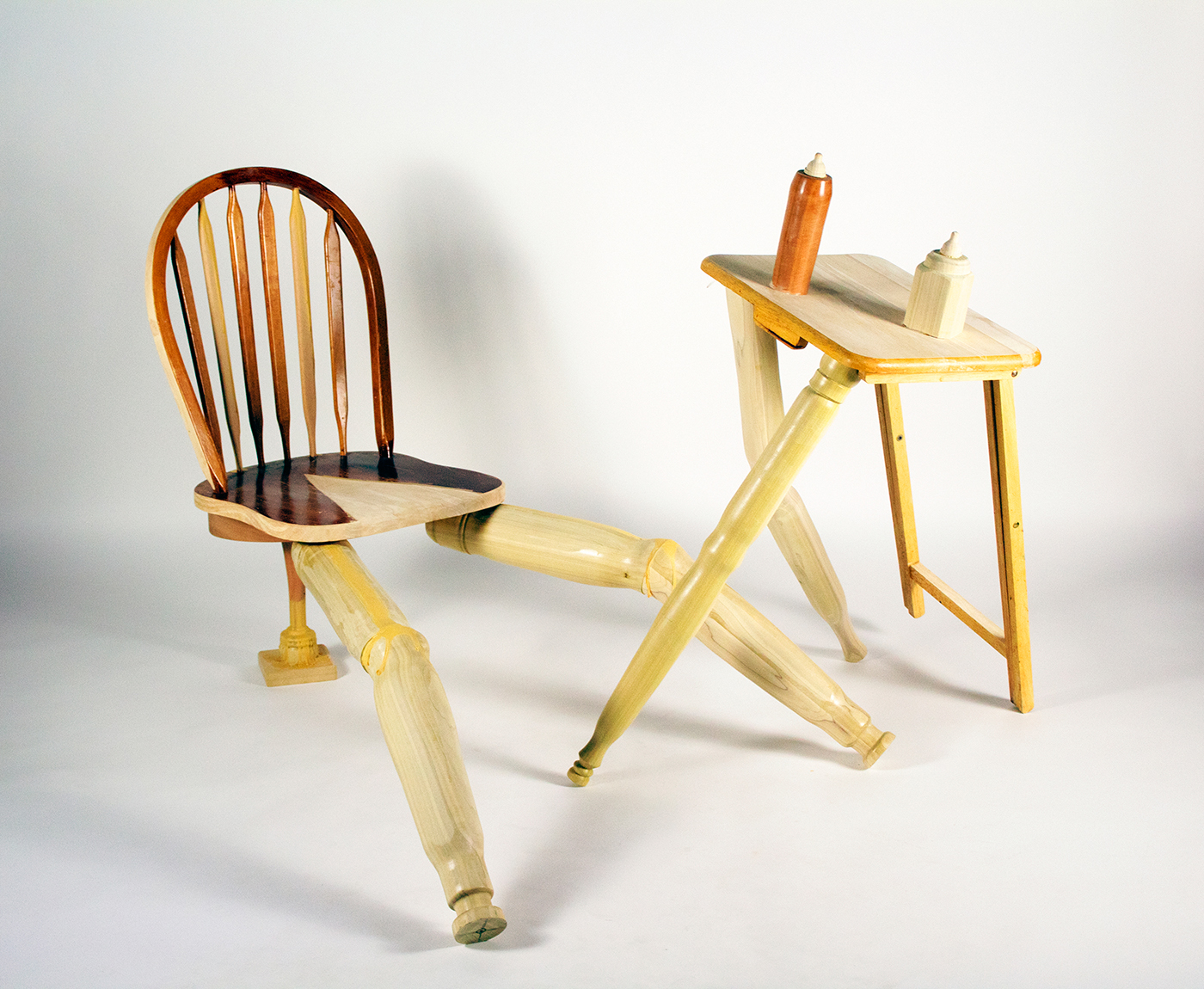Material Conditions: The Sculpture of Bea Hurd
Interviews & Features
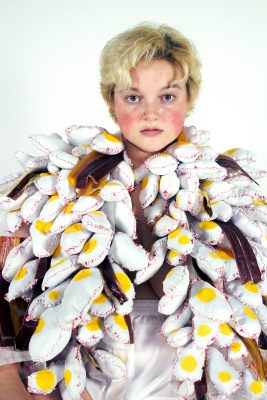
In middle school, I had a friend with a purse made entirely from sewn-together, used Capri Suns. Another friend had a wallet made entirely out of duct tape. Another had a bracelet from gum wrappers. I remember feeling genuinely delighted at the sight of these objects, asking, “Is that real?” of each—a question that didn’t really make sense. Of course they were real. Questions I meant to ask might have been, “Did you make that? Does it actually work? Who said you could do that?” Artistic materials were not pre-ordained, and for a brief, adolescent moment, I truly understood that. As an adult I’ve mostly forgotten. The work of Bea Hurd, a sculpture artist and recent graduate from the University of Utah, makes this revelation stick.
“I find there is something extremely satisfying in making gross or even slightly ugly a process which is associated with being pretty and cute.”
Hurd’s work revolves around a fascination with materials. For instance, “Deflation of the Flesh,” a robe stitched from deflated balloon rubber, casts normally playful rubber in a grotesque light. Hurd says, “I found that while balloons, as just a material, remind people of birthdays, parties and childhood. When they are hand stitched into a garment they become gross and uncomfortably erotic in nature. I find there is something extremely satisfying in making gross or even slightly ugly a process which is associated with being pretty and cute.”
That satisfaction is accessible to the viewer, too. Our days are shaped by materials at every moment, and to see them warped into something new invigorates awareness of that relationship. “Balloons are no longer party decorations but patches of rubber. And red thread is taken from the hand of your mother and into that of a surgeon. This unease reveals aspects of materials we often overlook or ignore,” Hurd says.
Hurd came into college as a painter focused on portraits, on realizing a vision. Then, during freshman year, a sculpture class upended her approach: “[I] was completely blown away at the realization of my love for working with materials and for object-making,” Hurd says. Materiality became the language in which Hurd would find her most powerful expressions. The need to meticulously plan her work started to fall away as she fell in love with experimentation—process as art itself. All of her pieces begin with a material she feels compelled to work with and go from there. “I have become an artist much more concerned in the process than in the final product,” she says. “I feel much less compelled to create a beautiful piece these days and way more interested in making art that takes me through a process of discovery.”
“I feel much less compelled to create a beautiful piece these days and way more interested in making art that takes me through a process of discovery.”
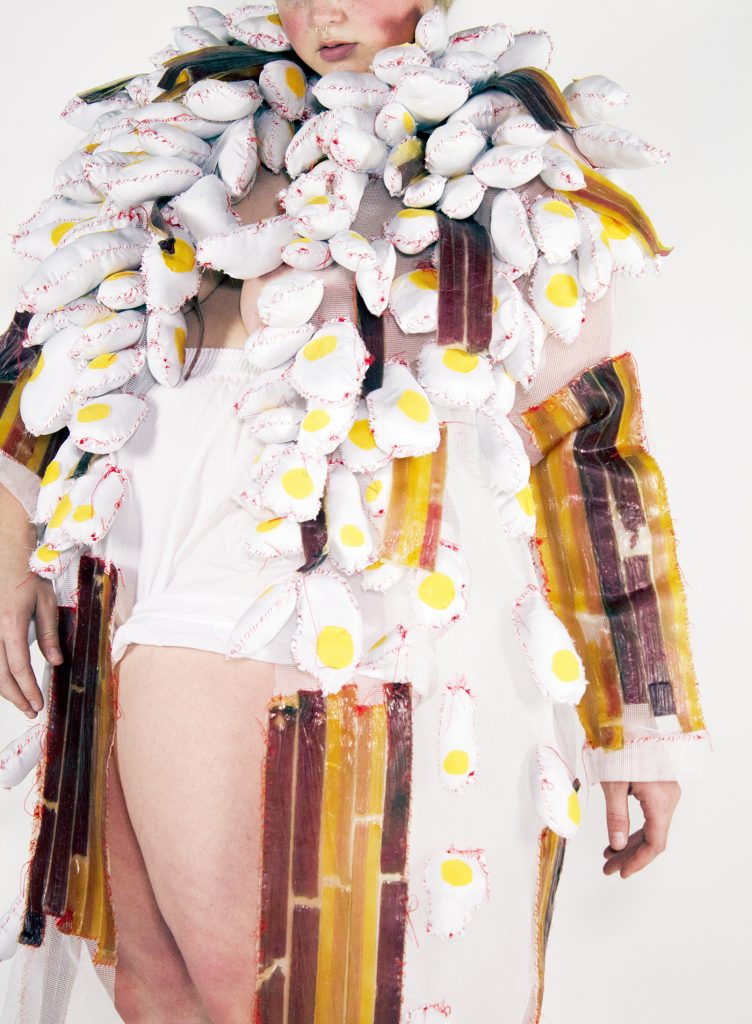
The extreme reappropriation of materials mesmerizes, making most of Hurd’s portfolio engaging on a gut level. Your familiarity of the material plays you, but only because it has first played Hurd. “I was [working] with embedding food in brush on latex,” she says. “I found that Fruit by the Foot, between two layers of brush on latex, looks exactly like bacon. And upon everyone in my sculpture department asking me of the materials my bacon was made from, I knew I had found my next love.” The finished piece, “Strip, Sear, and Suckle,” is a wearable bodysuit made from the bacon-like gummy and fluffy, egg-yolky sacs.
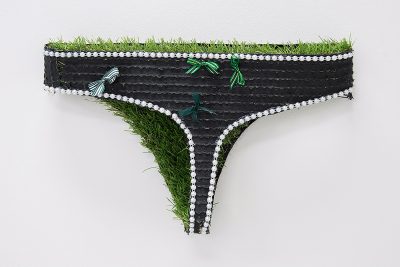
A turning point for this kind of material investigation was “Ticky Tacky,” a set of bras and panties lined inside with AstroTurf. Imagine that synthetic turf rubbing against your bits. “[‘Ticky Tacky’] brought viewers to the relationship between the female body and the home-home ownership and bodily autonomy—and of a synthetic understanding of the two,” says Hurd. “I knew at that moment that what felt most satisfying to me was art that relied on material for meaning. I become extremely conscious of every material I use and how I use it in all my work.”
It’s no coincidence that “Ticky Tacky” and “Strip, Sear, Suckle” ended up being fashioned in such a way that they relate to the human body, and, in the case of “Suckle,” the biology of Hurd’s womanhood. “When I came into sculpture and the literal representation of my face was taken away, I was pushed into finding more creative ways of alluding to my experience,” she says. Food and consumable materials captivated Hurd. “I have become consumed in analyzing how my relationship to consumption has influenced my understanding of my body and sexuality. If I am constantly working with materials that go into or are used in relation to the body, it seems almost inevitable that the body would become my place of focus.”
“I knew at that moment that what felt most satisfying to me was art that relied on material for meaning.”
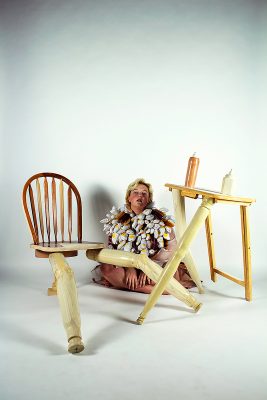
Those questions I asked in middle school of Capri Sun totes became better questions in front of Hurd’s intense body of work—what do these materials say about us when they inspire us to create?—but one old question still persists: “Who said you could do this?” This one says more about me than it does Hurd or anybody else. Who said we couldn’t? The material conditions of our lives belong to us. They are ours to play with and improve and change until we understand that basic relationship.
Hurd has two upcoming solo exhibitions: one at Nox Contemporary (open by appointment) beginning April 16 and ending early June. The second is at Finch Lane Gallery beginning April 30 and ending June 11. You can also browse more of her portfolio at beahurd.com.
